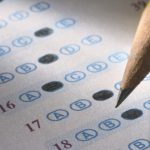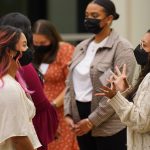The Association of Fraternity/Sorority Advisors (AFA) is pleased to announce Dr. Adam McCready, Dr. Trace Camacho, Dr. Crystal Garcia, and Kahlin McKeown as its 2022 Oracle editorial leadership team.
Preston Green, at the University of Connecticut, said there’s more at stake than the rights of students attending charter schools, which have continued to experience growth through the pandemic. If charters are not state actors, it would be easier for them to exclude some students, he said.
“I think when you have a greater understanding and a greater awareness of what type of disability it is, I think parents are asking those questions of their pediatricians or even school personnel,” says Tracy Sinclair, an assistant clinical professor of special education at the UConn Neag School of Education. “Better diagnostic tools allow doctors to diagnose children with autism as early as nine months — allowing these children to receive services as soon as possible.”
The challenges created by this fall’s contentious school board elections also offer superintendents and their teams a chance to bridge some political divides, says Casey D. Cobb, a professor of education policy a the University of Connecticut’s Neag School of Education.
A group of education law scholars, including Neag School’s Preston Green, has filed a friend-of-the-court brief in Carson v. Makin, a U.S. Supreme Court case about public funds for religious schools.
Two new staff members recently joined the Neag School Dean’s Office, and the Department of Educational Psychology also welcomed new staff and faculty.
Mark R. Shibles of Wilton, Maine, a former dean and professor emeritus of the Neag School of Education, was a highly respected scholar and leader in educational leadership and policy. With his passing on Aug. 24, 2021, at 83, the Neag School honors Shibles’ impact and his legacy.
A new book co-authored by Neag Professor of Educational Policy Casey Cobb is the latest installment in a series that examines controversial claims surrounding major political and cultural issues in America.
Throughout the academic year, the Neag School is proud to share the latest achievements of its faculty, staff, students, and alumni. Explore their most recent promotions, awards, retirements, publications, and more.
In a newly published journal article, Neag School Professor and adult learning expert Robin Grenier examines, with colleagues including Neag School alumna Kristi Kaeppel ’20 Ph.D., the use of book clubs and literature as a tool for enhancing the professional learning of employees across various organizations — from the military to nonprofits to health care. Voluntary, fiction-based book clubs, the researchers say, offer employees a nonformal setting for learning while critically raising consciousness within an organization.





